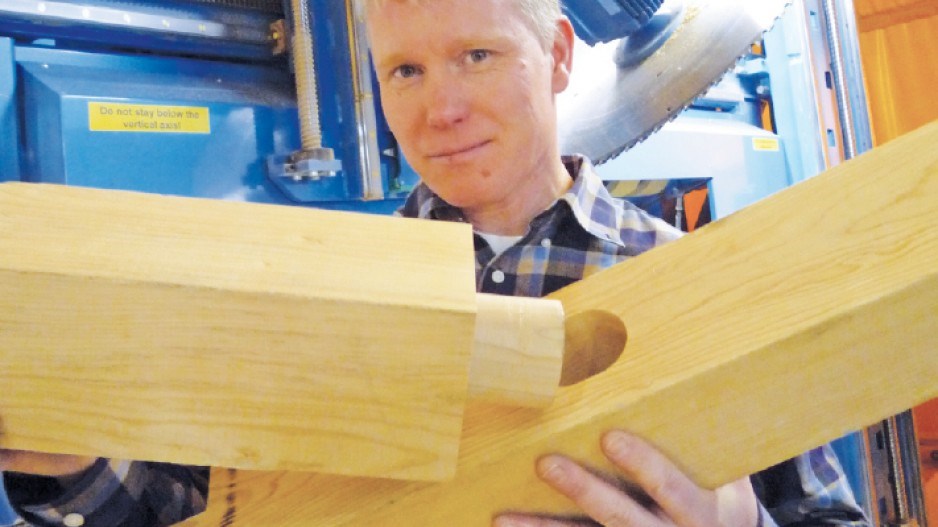University of British Columbia (UBC) researchers are taking engineered timber to new levels of construction performance through a computerized piece of technology that is a North American first.
Called the Hundegger Robot Drive, it sits in its own sawdust-proof chamber at the Centre for Advanced Wood Processing, part of the university’s Forest Sciences Centre. It has been described as the world’s most advanced piece of wood joinery equipment.
The complicated cuts it can perform are proving to researchers that wood can be a precision building material of the future.
The researchers intend to apply the machine’s high-tech performance to engineered wood products, said Iain Macdonald, managing director of the Centre for Advanced Wood Processing, showing that intricate wood-to-wood connections can be done using computers and robotics.
It’s a step toward developing a high-valued advanced wood components industry in B.C., he said.
Wood is making a big comeback in institutional and multi-family construction. Richmond’s Olympic Oval and UBC’s Earth Sciences Building are examples.
New laminated products have given wood the strength, and machines like the Hundegger Robot Drive provide the precision needed to meet high performance standards. Further, wood has green credentials often demanded by clients. The robot drive is computer-numerically-controlled, a type of programmable automation. It can be fed computerized specifications from an architect or engineer and, through the use of microcomputers, carry out the machining operations.
Macdonald said the university intends to use it for research, teaching and as part of an industry outreach program where it could be used for developing prototype building components.
The Hundegger is an improvement on other machines of its type because its robot arm permits it to handle a number of different complex cuts without human intervention. The robot arm can turn the wood in any direction.
Although it has only recently been installed at the university, it is producing the kind of complex joints and design elements needed for a new generation of glued and laminated wood products.
At a cost of $640,000, the Hundegger is the most sophisticated computer-numerically-controlled timber processing equipment in the world, said Robert Kozak, head of the faculty of forestry’s department of wood science.
He added that the UBC machine is the first of its type in North America. It is an integral component in the department’s mandate of driving change in the B.C. forestry sector, long a producer of lower-valued commodities such as construction lumber.
“We are looking at technologies, research and educational programs that revolve around value addition,” Kozak said, “and we see one of the hot areas as being timber design, wood building design and looking at wood use in larger-scale applications – going beyond houses.”
High-end timber connections that join precision-manufactured beams and panels are going to be one of the areas of research where the Hundegger will be used.
The Hundegger is a commercial piece of equipment made in Europe for the domestic construction sector. UBC was able to buy it through a federal grant, a contribution from the manufacturer and matching funding from a donor. The donor’s motivation, said Kozak, is to aid in developing vibrant forest communities that produce high-valued products.
Kozak noted that B.C. has already lost market share internationally to countries producing advanced wood products.•




